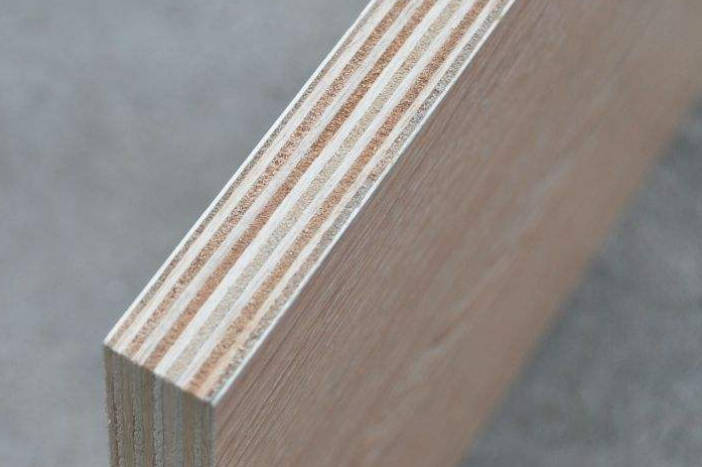The quality problems of laminated panels include the following types: delamination and peeling of the board surface, and poor flatness and deformation of the board.
The reason for the quality problems of laminated boards is often the result of a combination of various reasons, not just a problem caused by one factor. Common reasons are as follows:

veneer thickness
The thickness of the veneer selected in the production of laminated panels will affect the quality of the board. If the thickness of the veneer is uneven, it will lead to uneven glue application, which will easily cause the problem of layered and foamed core boards.
glue problem
Glue is one of the raw materials for the production of laminated panels, and its quality determines the bonding strength and environmental protection level of the boards.
Inferior glue not only has insufficient bonding strength but also contains high concentrations of volatile substances such as formaldehyde, which does not meet environmental protection standards and endangers people’s health.
In addition, during the hot-pressing process, the speed of pressure reduction, hot-pressing temperature, and hot-pressing time will all affect the adhesion of the board, resulting in glue opening.
During the hot-pressing process, the core board is glued and then sent to the hot press for pressing and forming. Therefore, it is necessary to accurately calculate and strictly implement the hot-pressing time and temperature to ensure the glued quality of the product.
moisture content
The flatness of solid wood laminated panels is affected by the moisture content. The moisture content standard of the laminated board is 8%-12%. The internal material and appearance of the laminated board after multiple processes have been fixed, but the moisture content will still affect its internal structure and appearance.
When the moisture content of the laminated board reaches the average moisture content of its environment, that is, it is in balance with the relative humidity of the atmosphere, and neither absorbs nor excludes moisture, its structure and performance are the most stable, and its is not easy to cause problems such as water absorption expansion, glue opening deformation, etc.
Therefore, it is necessary to adjust the moisture content according to regional differences, so that the board can adapt to different environments to achieve the most stable effect.
According to the impact of moisture content, the plate drying system can be designed. The core board after rotary cutting is sent to the dryer for high-temperature drying. The core board after drying can reach an ultra-low moisture content of 8% so that the board surface has higher flatness and better stability.
storage environment
The glue-opening deformation of the board is also affected by environmental factors. The environmental factors here refer to the local climate, temperature difference, air humidity, etc., but in the final analysis, it is caused by the moisture content.
Although the board itself has a certain waterproof and moisture-proof ability, the average moisture content in different regions is different. If the environment in which the board is located is too humid or too dry, even the highest quality board will not be able to adapt to such an extreme environment.
Therefore, the manufacturer must adjust the moisture content during production, carry out strict process processing and quality inspection, and carefully pack and store the product during storage and transportation to ensure a dry environment, to avoid deformation of the board caused by moisture in the board core.
write at the end
Under the background of the global call for a “low-carbon era”, the application of solid wood in the field of home furnishing is limited. Although the solid wood laminated board glued by fast-growing wood has the problem of cracking and deformation, its unique internal structure makes the board have high stability and superior comprehensive performance, so it stands out among many solid wood boards and has a huge role in the home furnishing industry. application potential.